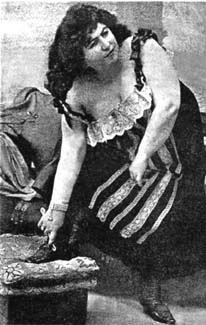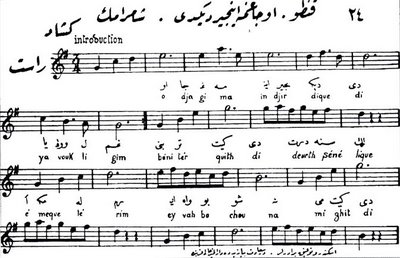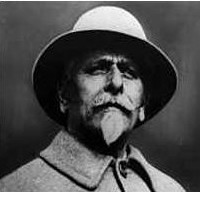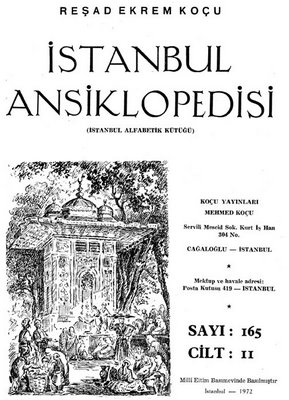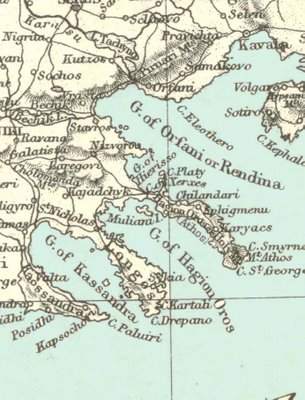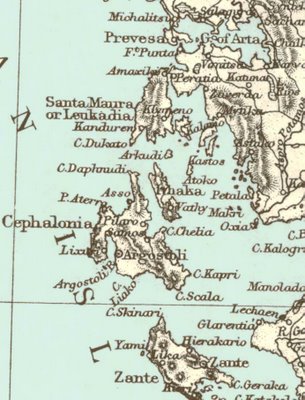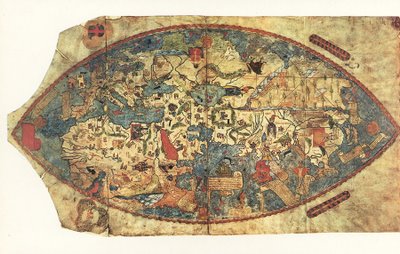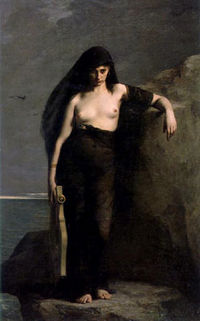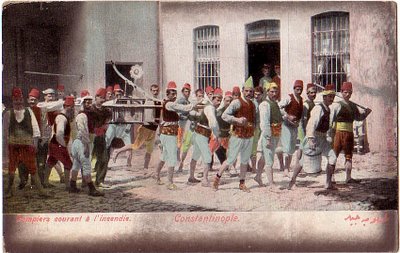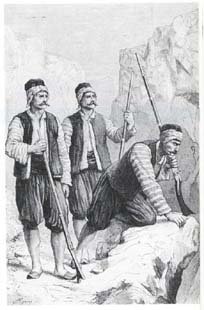 The inhabitants of Tatavla where Petri found refuge and anonimity were mainly resettled by the Ottomans with the Greeks of Mani region. They worked mostly at the admiralty shipyards of Kasimpasa by Halic/Golden Horn. The region where they came was mountainous and inaccessible hence they historically must have developed sailing skills. Homer's "Catalogue of ships in the Iliad mentions the cities of Mani: Messi, Vitilon (Itilo), Kardamli (or Skardamoula), Enopi, Gerinia, Pefnos, Avia, Githio, Kotronas, etc.
The inhabitants of Tatavla where Petri found refuge and anonimity were mainly resettled by the Ottomans with the Greeks of Mani region. They worked mostly at the admiralty shipyards of Kasimpasa by Halic/Golden Horn. The region where they came was mountainous and inaccessible hence they historically must have developed sailing skills. Homer's "Catalogue of ships in the Iliad mentions the cities of Mani: Messi, Vitilon (Itilo), Kardamli (or Skardamoula), Enopi, Gerinia, Pefnos, Avia, Githio, Kotronas, etc.The Maniots (or Maniates; Greek: Μανιάτες)
The Mani Peninsula, also known as Maina, is a region in Greece. The Mani is the central peninsula of the three which extend southwards from the Peloponnese in southern Greece. The name "Mani" is thought to have originally meant "dry" or "treeless." Administratively, The Mani is divided between the districts of Laconia and Messenia. Messenian Maniot surnames almost uniformly end in -eas, whereas Laconian Maniot ones in -akos.
Homer refers to a number of towns in the Mani region. The area was occupied by the Dorians in about 1200 BC, and became a dependency of Sparta. The Mani was self-governing for a time before being absorbed into the Roman Empire in the 2nd century. As the power of the Byzantine Empire declined in the 9th century AD, the fortress of Maini in the south became the area's centre. After the fall of Constantinople to the Fourth Crusade in 1204, Italian and French knights (known to the Greeks as Franks), occupied parts of the Peloponnese. In 1249 the Mani was occupied by the Venetians, who made it one of the twelve baronies of the Principality of Moreas and built the fortresses of Mystras, Passavas, Gustema (Beaufort) and Megali Maini.
 In 1460 Mystras fell to the Ottomans, but the Mani was not subdued and retained its internal self-government in exchange for an annual tribute. The Maniots continued to bear arms and sporadically refused to pay levies and taxes imposed by the Ottomans. The Maniots survived by becoming pirates. Very ferocious closely-knit clans united by blood evolved. Local chieftains or beys governed Mani on behalf of the Ottomans. As Ottoman power declined, the mountains of the Mani became a stronghold of the kleftes, bandits who also fought against the Ottomans. There is evidence of a sizeable Maniot emigration to Corsica sometime during the Ottoman years. The last bey of Mani, Petros Mavromichalis was among the leaders of the Greek War of Independence. He proclaimed the revolution at Areopoli on 17 March 1821. The Maniots contributed greatly to the struggle, but once Greek independence was won they wanted to retain their local autonomy. During the reign of Ioannis Kapodistrias they violently resisted outside interference. The Mani's local autonomy was abolished in 1870, and the area gradually became a backwater as the inhabitants abandoned the land through emigration.
In 1460 Mystras fell to the Ottomans, but the Mani was not subdued and retained its internal self-government in exchange for an annual tribute. The Maniots continued to bear arms and sporadically refused to pay levies and taxes imposed by the Ottomans. The Maniots survived by becoming pirates. Very ferocious closely-knit clans united by blood evolved. Local chieftains or beys governed Mani on behalf of the Ottomans. As Ottoman power declined, the mountains of the Mani became a stronghold of the kleftes, bandits who also fought against the Ottomans. There is evidence of a sizeable Maniot emigration to Corsica sometime during the Ottoman years. The last bey of Mani, Petros Mavromichalis was among the leaders of the Greek War of Independence. He proclaimed the revolution at Areopoli on 17 March 1821. The Maniots contributed greatly to the struggle, but once Greek independence was won they wanted to retain their local autonomy. During the reign of Ioannis Kapodistrias they violently resisted outside interference. The Mani's local autonomy was abolished in 1870, and the area gradually became a backwater as the inhabitants abandoned the land through emigration.
Etymologically, the name "Maniot" is a diminutive implying "of Mani". Geographically, the peninsula itself is an extension of the Taygetus mountain range. Throughout history, the Maniots have been known by their neighbors and their enemies as fierce warriors, proudly independent, who practice blood feuds – so fierce and savage, in fact, that they have been compared to the Nordic Berserkers. At times they were even referred to as the "super soldiers" of the 15th, 16th, 17th, 18th and early to mid 19th centuries. Napoleon Bonaparte addressed to them as "Spartan descendants" and Theodoros Kolokotronis (leader of the Greek War of Independence) called them "The Spartans".
Their surnames uniformly end in "-eas" in what is now the Messenian part of Mani, "-akos" in what is now the Laconian part of Mani and the occasional "-oggonas". The Maniot "-akos" is not to be confused with the Cretan "-akis", which was introduced into Mani by the first Cretan refugees who fled Crete once the Ottomans eventually fully occupied Crete in 1669. The Maniot "akos" denotes strength, power andmasculinity as opposed to the Cretan "akis" which denotes weakness, being small, and being effeminate in nature.
During the early modern period, the Maniots were renowned pirates with Oitylo having the nickname Great Algiers. For the most part, the Maniots lived in fortified villages (and "house-towers") where they defended their lands against the Ottomans and even against the armies of William II Villehardouin .Dances
Two dances come from Mani: Palio Maniatiko (meaning "Old Maniot") and the Modern Maniatiko. The Palio Maniatiko is only found in Mani and is described as an ancient dance. The Modern Maniatiko is the modern version of the Palio Maniatiko dance and includes certain aspects of the Kalamatiano dance in it. Like the Palio Maniatiko, it is only performed in Mani.
Piracy
"If any ship come to anchor on their coast, many arm themselves and go to the place, over against where the ship doth ride; some of them will be in priests habits, walking by the sea side, with their wallets, in which they will have some wine and bread. Their companions lye hid behind the bushes at some convenient post. When any strangers come ashore, who do not understand their language, the feigned priests make signes to them, shewing them their bread and wine, which they offer to them for money, by which the strangers being enticed from the sea side (and it may be to sit down and taste their wine) the hidden Manjotts come and make their prey. The priests will seem to be sorry, and endeavor to make the strangers to believe they were altogether ignorant of any such design. So a white flagg is put out, and a treaty held with the ship for their ransome. The priests endeavor to moderate the price, showing a great deal of respect to their companions, who are clothed in Turkish habits. Many ships have been thus served." Bernard Randolph, Present State of the Morea.
Part of Maniot culture involved piracy. The Maniots were famous and fearsome pirates whose ships dominated the Maniot coastline. The Maniots became pirates because Mani was not a very fertile land and the Maniots did not have many natural resources. The Maniots considered piracy a legitimate response to the fact that their land was poor, and it became their main source of income.[83] The pirate raids were not stopped by the local priests of the Eastern Orthodox Church, who in fact blessed the ships before they left and sometimes accompanied them on raids. Most of the Maniot pirates came from Messa Mani.[84] The main victims of Maniot pirates were the Ottomans, but the Maniots also targeted ships of powerful European countries.
Superstition
The Maniots are a very superstitious people. Maniots mainly believe in witches, demons, vampires, and ghosts. When Henry Herbert, 3rd Earl of Carnarvon, was touring Mani in 1839, he found a fresh egg by the side of the road and offered it to a Maniot soldier who escorted him, who declined the offer claiming that if a hag had enchanted it he would have to marry her. The Maniots thought that certain areas were haunted by demons.
Vendettas
Another important aspect of Maniot culture were the vendettas which frequently plagued Mani. Usually, the decision to start a vendetta was made at a family gathering. The main aim of a vendetta was usually to wipe out the other family. The families involved locked themselves in their towers and whenever they got the chance murdered members of the opposing family.[86] The other families in the village normally locked themselves in their towers in order not to get in the way of the fighting.
Some vendettas went on for months, sometimes years. In vendettas, the families could have a truce or treva, if one family needed to attend a religious ceremony or when it was time to harvest the crops. As soon as the treva ended, the killing could resume. Vendettas usually ended when one family was exterminated or when the defeated family left the town. Sometimes families came to terms, and vendettas stopped when the Turks invaded. The longest treva occurred when the Mavromichales declared war on the Turks in 1821. Vendettas continued after the liberation of Greece even though the Regency tried to demolish the towers.
Piracy
"If any ship come to anchor on their coast, many arm themselves and go to the place, over against where the ship doth ride; some of them will be in priests habits, walking by the sea side, with their wallets, in which they will have some wine and bread. Their companions lye hid behind the bushes at some convenient post. When any strangers come ashore, who do not understand their language, the feigned priests make signes to them, shewing them their bread and wine, which they offer to them for money, by which the strangers being enticed from the sea side (and it may be to sit down and taste their wine) the hidden Manjotts come and make their prey. The priests will seem to be sorry, and endeavor to make the strangers to believe they were altogether ignorant of any such design. So a white flagg is put out, and a treaty held with the ship for their ransome. The priests endeavor to moderate the price, showing a great deal of respect to their companions, who are clothed in Turkish habits. Many ships have been thus served." Bernard Randolph, Present State of the Morea.
Part of Maniot culture involved piracy. The Maniots were famous and fearsome pirates whose ships dominated the Maniot coastline. The Maniots became pirates because Mani was not a very fertile land and the Maniots did not have many natural resources. The Maniots considered piracy a legitimate response to the fact that their land was poor, and it became their main source of income.[83] The pirate raids were not stopped by the local priests of the Eastern Orthodox Church, who in fact blessed the ships before they left and sometimes accompanied them on raids. Most of the Maniot pirates came from Messa Mani.[84] The main victims of Maniot pirates were the Ottomans, but the Maniots also targeted ships of powerful European countries.
Superstition
The Maniots are a very superstitious people. Maniots mainly believe in witches, demons, vampires, and ghosts. When Henry Herbert, 3rd Earl of Carnarvon, was touring Mani in 1839, he found a fresh egg by the side of the road and offered it to a Maniot soldier who escorted him, who declined the offer claiming that if a hag had enchanted it he would have to marry her. The Maniots thought that certain areas were haunted by demons.
Vendettas
Another important aspect of Maniot culture were the vendettas which frequently plagued Mani. Usually, the decision to start a vendetta was made at a family gathering. The main aim of a vendetta was usually to wipe out the other family. The families involved locked themselves in their towers and whenever they got the chance murdered members of the opposing family.[86] The other families in the village normally locked themselves in their towers in order not to get in the way of the fighting.
Some vendettas went on for months, sometimes years. In vendettas, the families could have a truce or treva, if one family needed to attend a religious ceremony or when it was time to harvest the crops. As soon as the treva ended, the killing could resume. Vendettas usually ended when one family was exterminated or when the defeated family left the town. Sometimes families came to terms, and vendettas stopped when the Turks invaded. The longest treva occurred when the Mavromichales declared war on the Turks in 1821. Vendettas continued after the liberation of Greece even though the Regency tried to demolish the towers.

